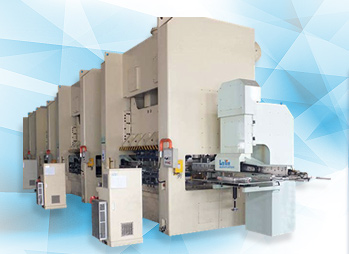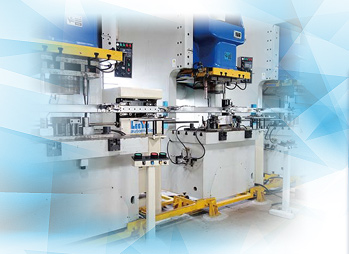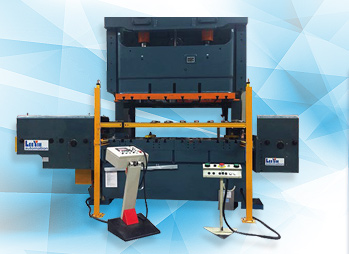In international industrial applications, the industrial robot is known as a secondary robotic arm"-a stamping robotic arm. It is the most common as it is pricecompetitive, structurally simple, and highly stable. In order to fulfill customer demand, we continuously develop a wide variety of models. Although most operate smoothly, some have continuous problems so that users are unable to fully operate them. As news of such problems appears occasionally, users who were planning to use stamping robotic arms become hesitant to so. This is a big loss for them.
For these reasons, here is some advice for users planning to implement stamping robotic arms in their processes; we hope it will be of assistance.
- Press consideration:
Such as capacity, bolster area, slide plate area, minimum working height, S.P.M, slide location, die cushion, and slide knockout device, should be studied and planned in collaboration with LEE YIH and die maker.
- Component consideration:
Based on the shape, material, and thickness of materials, the pick-up method, such as vacuum pad, electromagnet, and gripper, and the feeding method should be carefully selected. Also feeding method, stacker, out-feeding, coherence with the next process, and the placement of idle stage are factors affecting the success of robotic arm implementation.
- Die consideration:
The size, pitch, height, knockout plate, scrape disposal, stability, die quick exchange, and loading/unloading die are important issues in overall consideration.
- Operation maintenance and preparation:
Maintenance and preparation are essential to the smooth operation of robotic arms. Users must pay attention to the initial adjustment, troubleshooting, routine checking and maintenance, and the establishment of a management system of the robotic arm.
- Safety consideration:
Although a robotic arm can prevent injuries and eliminate harsh work environments, improper operation may also result in injuries. Therefore, it is necessary to minimize incorrect actions of the robotic arm and reinforce foolproof measures. Routine management and training can also minimize safety threats.
- Economic benefits:
By implementing the robotic arm, users will not need to pursue automation needlessly. Full automation may result in problems for specific parts of the process. As a result, it is expensive, the defect rate is higher, and adjustment is difficult. By implementing robotic arms in specific procedures, there can be a significant reduction in manpower and capital, leading to economic benefits.

|






